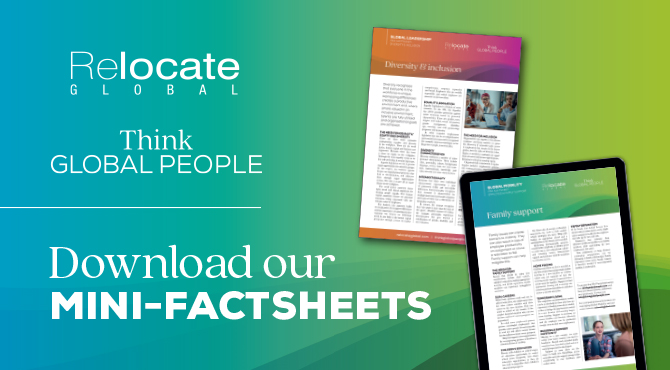No change on UK gender pay gap
CIPD analysis of 2018-19 and 2020-21 gender pay reporting finds women still earn 90p for every pound earned by men. Tackling unconscious bias key, says workplace psychology consultancy, Pearn Kandola.

Related reading from Relocate Global
- Action on gender pay gap ‘more urgent than ever’
- Think Women: Make the pandemic juggling act work for you
- Male employees more likely to request pay rises
‘No time to be taking foot of the pedal’
The CIPD, the professional body for HR and people development, analysed this year's gender pay gap data for Great Britain, finding the number of organisations reporting their figures is also down 11%. Charles Cotton, senior policy adviser for reward and recognition at the CIPD said the decline in the number of organisations reporting their gender pay gap was “disappointing”.“We encourage those who haven’t yet reported to do so as soon as possible, otherwise they risk enforcement action and possible damage to their reputation,” said Charles Cotton.“Evidence suggests that economically, women have been adversely and disproportionately affected by the Covid-19 pandemic and now is not the time to be taking the foot off the pedal when it comes to equality in the workplace.”Is the gender pay gap closing?
With significantly fewer companies reporting data in 2019-20 due to the pandemic, the CIPD compared data from the years 2018-19 and 2020-21 to provide a two-year review of gender pay gaps. The professional body for HR and people development’s analysis for this period found:- The headline median figure has got worse – rising from 9.5% in 2019 to 10.4% – a change of 0.9%. Women are earning roughly 90p for every pound earned by men.
- The mean figure is virtually unchanged at 13.3%.
- By region, the biggest falls have been: Yorkshire and the Humber (-16%), West Midlands (-15%) and Scotland and Wales (both –14%).
Numbers without narratives
The CIPD’s analysis further shows that around 65% of companies this year provided a URL to information on their gender pay gap, compared to 69% previously. This, the CIPD suggests, means that over a third of companies required to report do not provide any form of narrative around their figures, while acknowledging that the presence of the URL does not necessarily indicate that an organisation has provided a narrative about their figures. Previously, 69% of companies provided a URL. The professional body is calling for accompanying narratives and action plans to be mandatory alongside the reporting of gender pay gap figures. “It’s more important than ever that employers don’t just report figures; instead, they need to fully engage and understand the reason for any gap and be transparent about how they plan to tackle it and improve gender equality in the workplace,” said Charles Cotton. “Transparency is important not just for external stakeholders, such as investors or customers, but also for employee engagement. Until narratives and action plans become compulsory, we encourage employers and our members to publish them voluntarily.” The CIPD’s guidance to support employers with gender pay gap reporting is available here.Why is there a gender pay gap?
The disparity between male and female median pay is attributed to the interplay of a number of factors, including the prevalence of women in part-time roles because of childcare and other caring responsibilities, as well as unconscious bias.Caring responsibilities
A new survey from charity Working Families to coincide with National Work-Life Week 2021 reports that around 35% of parents with caring responsibilities surveyed feel this is stalling their career progress.Almost as many (38%) said that the people who worked the longest hours were the most respected by senior leaders in their organisation, while more than two in five (44%) of working parents felt that the senior leaders in their organisation were not positive role models for achieving a good work-life balance.Unconscious bias
Explaining the role of unconscious bias in the lack of women in senior roles in the workplace and the link to the gender pay gap, Dr Jo Kandola, psychologist and Head of Digital Solutions at workplace psychology consultancy, Pearn Kandola, comments, “It’s disappointing, yet unsurprising to see that the gender pay gap hasn’t improved this year. We know that the gap is caused by a lack of women in senior roles, so what’s causing this?“When there’s competition over resources – which is exactly what happens in the promotion process – the standards used to assess women shift.“Organisations often consciously ask ‘who are the most competent women?’ when developing the talent pipeline in the hope that this will translate into more women being promoted.“But the number of people who sit in a talent pipeline is not restricted and so, at this stage, there is no competition over resource. “However, during the promotion process, when the number of people who can move up is restricted, the questions shifts to ‘who is the most competent?’. And, when considered in amongst men, due to gender stereotypes women are viewed as having less competence. “As a consequence of this, having more women within an organisation is unlikely to transition to a higher number of women in senior roles."What can employers do to close their gender pay gap?
“A common suggestion that many think will help to reduce the gender pay gap is to increase the presence of women on recruitment panels,” continued Dr Jo Kandola.“That’s because where there is gender disparity, there is an assumption that it is caused by men. But, what if women, including myself, are explicit in our own subordination?“Our research at Pearn Kandola has found that women more easily associate men with competence than they do women. So, having gender balanced panels is unlikely to lead to different outcomes.“The common misconception is that women need to up their game, and make more effort – to negotiate salary, or develop new skills – to get into senior roles. But, actually, the true cause of the gender pay gap that we see today is gender stereotypes.“To tackle these, we need to fix the system, not women themselves. Offering better leadership and negotiation training isn’t the solution. Instead, we need to tackle the problem at its root; we need to reject the belief that men and women are different in terms of their skills and abilities. And this first starts with widespread education.”Follow for more HR news and features from Relocate Global
Subscribe to Relocate Extra, our monthly newsletter, to get all the latest international assignments and global mobility news.Relocate’s new Global Mobility Toolkit provides free information, practical advice and support for HR, global mobility managers and global teams operating overseas.
 Access hundreds of global services and suppliers in our Online Directory
Access hundreds of global services and suppliers in our Online Directory©2025 Re:locate magazine, published by Profile Locations, Spray Hill, Hastings Road, Lamberhurst, Kent TN3 8JB. All rights reserved. This publication (or any part thereof) may not be reproduced in any form without the prior written permission of Profile Locations. Profile Locations accepts no liability for the accuracy of the contents or any opinions expressed herein.






































